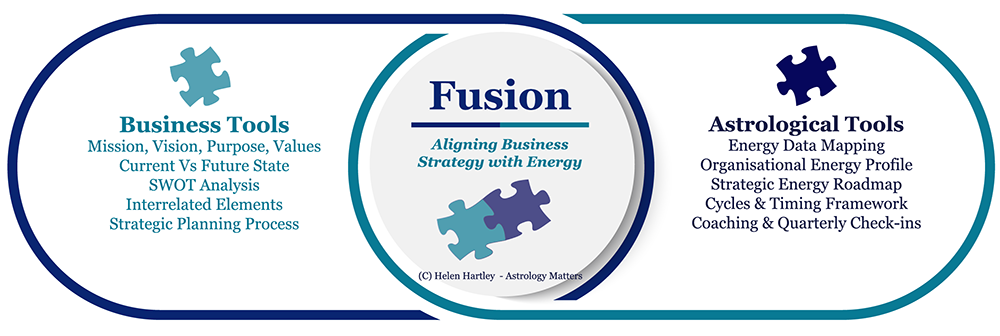Fusion: Aligning Business Strategy with Energy
Planning for your business’s success requires a strong foundation, including the incorporation of key business planning tools. These tools are essential for shaping the direction of your business. However, in my experience, many small businesses either overlook or are unaware of the value of strategic frameworks. During my corporate years, no operational plan would have been developed without them: they were fundamental to ensuring long-term success.
Business Planning Tools
- Mission, Vision, Purpose, and Values: These foundational elements define the organisation’s identity, guiding decision-making, goal-setting, and overall strategic direction.
- Gap Analysis (Current vs. Future State): A structured comparison of the business’s current state and its desired future state helps create a strategic roadmap for transformation.
- SWOT Analysis: A method for evaluating Strengths, Weaknesses, Opportunities, and Threats to identify key focus areas for growth, risk management, and competitive advantage.
- Interrelated Elements: Recognising how different business functions (strategic and operations planning, finance and compliance, sales and marketing, product innovation, etc.) interact ensures a more integrated approach to decision-making.
- Strategic Planning: The process of setting intention, focus and developmental strategy for the next 3-5 years
Astrological Business Tools
- Source Astrological Data: Gathering the business’s founding date, incorporation details, and key planetary influences to analyse its inherent energy and cycles.
- Create an Astrological Profile of the Entity: Establish your unique blueprint that reveals the organisation’s strengths, challenges, and optimal growth opportunities.
- Prepare an Operational Guide: Aligning Business Cycles with Astrological Timing for Maximum Impact and Success.
- Map Energy Patterns and Cycles: Identifying long-term planetary transits, eclipse influences, and retrograde periods to anticipate innovation cycles and key decision-making moments.
- Coaching: Regular sessions to review astrological trends, align business strategies
- Quarterly Check-ins: Adjust plans in response to changing cosmic influences and evolving business needs.
Fusion presents a synergistic approach to business transformation, combining strategy with astrological expertise. It optimises logical planning and the benefits of universal energy alignment, giving companies a competitive edge.
Curious? Reach out to Helen here. Join Astrology Matters Instagram, Join Astrology Matters Facebook
Small Business & Corporate – What defines these entities?
A small business is typically a Sole Proprietorship, Partnership, or a privately held Pty Ltd, where the owner or a small group of owners play a direct role in decision-making and are fully responsible for the day-to-day operations. These businesses often have a lean structure, allowing for flexibility, quick decision-making, and close oversight of financial and operational matters. Small businesses tend to be more personalised in their approach, often serving niche markets or local communities, with growth primarily driven by the owner’s vision and effort.
In contrast, big business, as defined in this research, refers to larger, more structurally complex entities, typically organised as a Company or Pty Ltd. These businesses may be privately or publicly owned, including those listed on the stock exchange. They generally operate with a sophisticated organisational hierarchy, featuring a board of directors that oversees governance and strategic direction. Unlike small businesses, big businesses benefit from greater access to capital, larger workforce management, and the ability to scale operations across multiple locations or industries. Their decision-making processes are often more formalised, with leadership delegated across various departments to ensure efficiency and compliance with corporate regulations.


